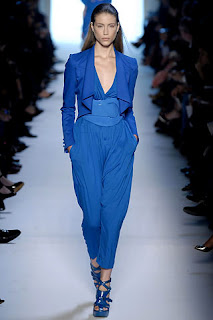 Piotr Uklański, Untitled (Dance Floor), 1996
Piotr Uklański, Untitled (Dance Floor), 1996This work is now at the Guggenheim's show called the Shapes of Space. When I was an intern I got to watch them installing the dance floor and the artist was there to supervise it. He was wearing a grey suit, pink shirt unbuttoned, and pointy shoes. He had an entire team of Polish helpers installing the work while he fiddled with the computer program that runs the floor.
The piece is a dance floor that has been transposed into the architecture of the museum. It is meant to fit differently into each new space. There's pop music playing, and the music is adapted for each location to be whatever songs are popular at the moment. The floor lights up and people are supposed to dance.
No one danced (except for children).
The purpose of the work is to show us the difference between the social and interactive space of a dance floor and the subdued institutional space of a museum. The work creates a space that is not quite completely dance club because you still remember you are in a museum. The aura of the museum overpowers any attempt at a complete transposition of a dance hall.
It reminded me of the Saturday Night Fever dance floor, and then made me think about how much art and entertainment is being blurred now a days. Is a museum supposed to entertain? And further, just what kind of a space is the museum? It's social in the sense that you go with friends, but you don't really meet other people like you could potentially do in a bar or club. It's educational, but not a concrete education like a class, because ultimately if you like something or not is a matter of taste. It could also be a private experience with an artwork. It's like a library in that people don't really speak loudly and they tread carefully. But there also is a certain level of entertainment, even if it is on the basic level that people just like to look at things. It's a strange mixture one that is unique to a museum. (But even within museums there are subtly differences in the spaces, the Guggenheim building seems to invite more interaction just because of the ramp, while the Metropolitan Museum is more conducive to wandering around and finding rooms with no other visitors in it. I'll leave it at that.)





